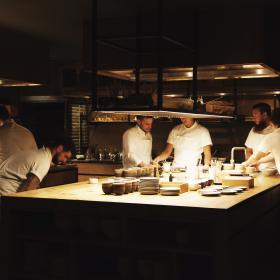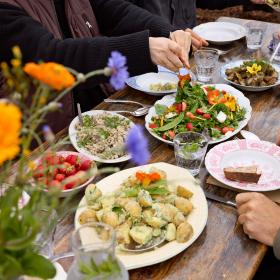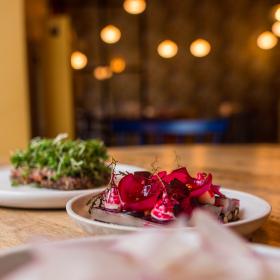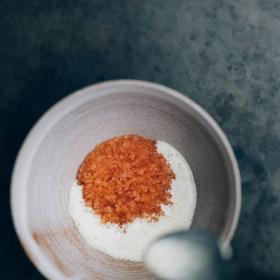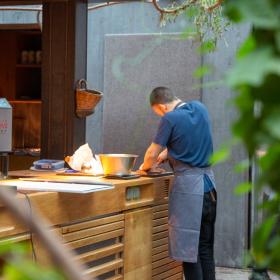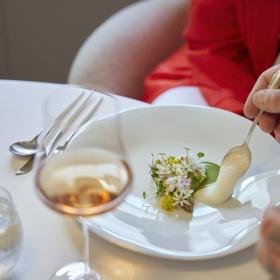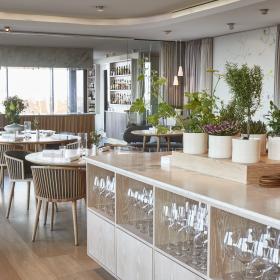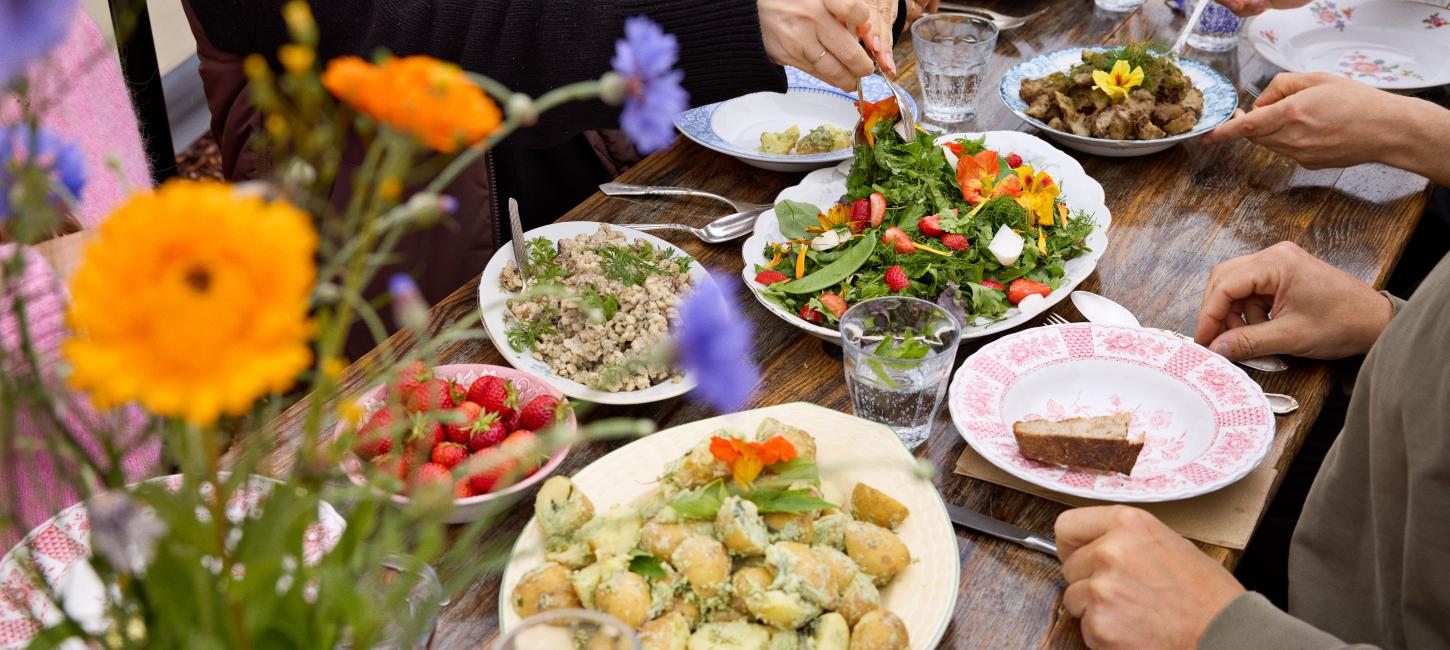
Copenhagen celebrates 20 years of New Nordic Food revolution
Top chefs from the Nordic countries signed a declaration in Copenhagen in 2004, changing the world of gastronomy.
Copenhagen has been on a culinary journey for the past two decades, and it all began with one manifesto signed by 12 chefs on a November day 20 years ago.
The manifesto changed the Danish approach to cooking and the use of local products, turning Copenhagen into a culinary hotspot.
Today, the city’s restaurant scene is inspired by the world, and it attracts a global audience. Four out of ten international visitors say that food is an incentive to travel to Denmark.
- In 2024, Copenhagen held 26 Michelin stars spread across 15 restaurants, making it the leading Michelin city in the Nordics.
- Geranium and Noma have both held the prestigious titles of being named the world’s best restaurant.
- The 2023 winner of Bocuse d’Or is the head chef of Søllerød Kro, Brian Mark Hansen. The 2024 winner of Bocuse d’Or Europe is chef Sebastian Holberg Svendsgaard, previously from Geranium.
- Restaurant Alchemist (2 stars), Jordnær (3 stars), Aure (1 star) and Koan (2 stars) all gained their first Michelin star within less than one year of opening.
- Denmark has 17 Green Michelin Stars, awarded to restaurants for their sustainable practices. Norway, Sweden, Iceland, and Finland have 19 Green stars combined.
It is not only high-end restaurants but a widespread trend in Copenhagen, where bakeries compete in making the best sourdough, Danish farms supply seasonal and often organic produce to the restaurants, and microbreweries, cider- and winemakers experiment with creating new flavours around the country.
Copenhagen has become a hub for food lovers, not least because one restaurant and one manifesto spearheaded a movement and created a food culture, that had been missing.
Where to eat food with a New Nordic mindset?
The New Nordic Food Manifesto
In 2004, one year after opening the Nordic food-focused restaurant Noma in Copenhagen, food entrepreneur Claus Meyer sent out a document with 10 suggestions to some of the best chefs in the Nordic region.
It was a manifesto he had worked on for almost a year with Jan Krag Jacobsen, the then vice president of The Danish Gastronomical Academy with input from other experts.
Claus Meyer writes about the process in his biography ‘Dreamer’, and the ambition was to shape Nordic gastronomy like the New Basque Kitchen movement had shaped the Basque region in the 1970s.
It should be local, simple, pure and fresh, and he felt the time was right to create a common ground for the Nordic countries.
A total of 12 chefs signed the declaration after agreeing on how the manifesto should be formulated, among them several Michelin chefs.
From Denmark, chef Erwin Lauterbach and Noma head-chef René Redzepi signed it.
The manifesto’s ten points:
- To express the purity, freshness, simplicity and ethics we wish to associate to our region.
- To reflect the changes of the seasons in the meal we make.
- To base our cooking on ingredients and produce whose characteristics are particularly in our climates, landscapes and waters.
- To combine the demand for good taste with modern knowledge of health and well-being.
- To promote Nordic products and the variety of Nordic producers and to spread the word about their underlying cultures.
- To promote animal welfare and a sound production process in our seas, on our farmland and in the wild.
- To develop potentially new applications of traditional Nordic food products.
- To combine the best in Nordic cookery and culinary traditions with impulses from abroad.
- To combine local self-sufficiency with regional sharing of high-quality products.
- To join forces with consumer representatives, other cooking craftsmen, agriculture, fishing, food, retail, and wholesale industries, researchers, teachers, politicians, and authorities on this project for the benefit and advantage of everyone in the Nordic countries.
Source: Nordic co-operation
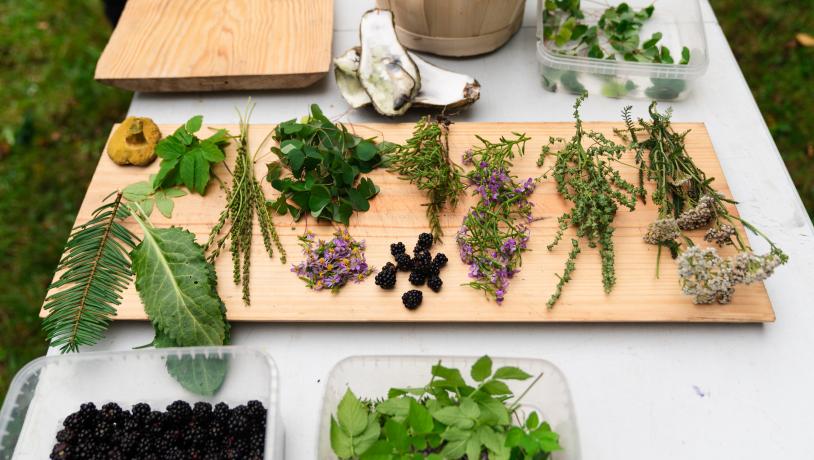
Photo:Daniel Rasmussen
French was fine-dining
Before the manifesto, in the early 2000s, the idea of high-end food in Denmark was inspired by the French kitchen, and fois gras was a sign of something great, along with heavy meat dishes and sauces. There wasn’t a focus on local produce and vegetables, as we know it today.
This changed with the opening of restaurant Noma, which focused solely on Nordic ingredients. The head chef and co-owner, René Redzepi, was inventive in the kitchen, and he would serve lamb with the herbs that the lamb would naturally eat – or ants in a dish to add acidity instead of using lemons.
In the years that followed, Noma was named the world’s best restaurant five times—until gaining the title was no longer possible.
Cooking up new ideas
The new Nordic food movement continues to live on today, even after Noma announced that the restaurant “as we know it” would soon change.
Today, the city’s restaurants are inspired by food from around the world but still build on the foundation of the New Nordic mindset.
According to Beau Clugston, a former chef at Noma’s test kitchen for several years, the legacy is a mindset more than actual techniques.
It’s about asking yourself: Are the ingredients fresh and local?
He still uses that way of thinking in his Copenhagen restaurant, Iluka, which focuses on seafood from the nearby waters.
Many other chefs, sommeliers, and waiters have also opened their own places, which has shaped the Copenhagen restaurant scene of today.
You will find a great meal in all price categories. Whether you go and enjoy a burger from Popl, which was a Noma invention after the covid lockdown, or a high-end dinner from the newly awarded three-Michelin-starred Restaurant Jordnær with head chef and co-owner Eric Vildgaard at the helm, or the two-starred Kadeau which serves food inspired by the Danish island of Bornholm.
Or it could be flavourful tacos from Hija de Sanchez, founded by Noma’s former pastry chef, Rosio Sanchez. Twenty years later, the legacy of the manifesto lives on.
Other related press material

Senior Manager – Press & PR
